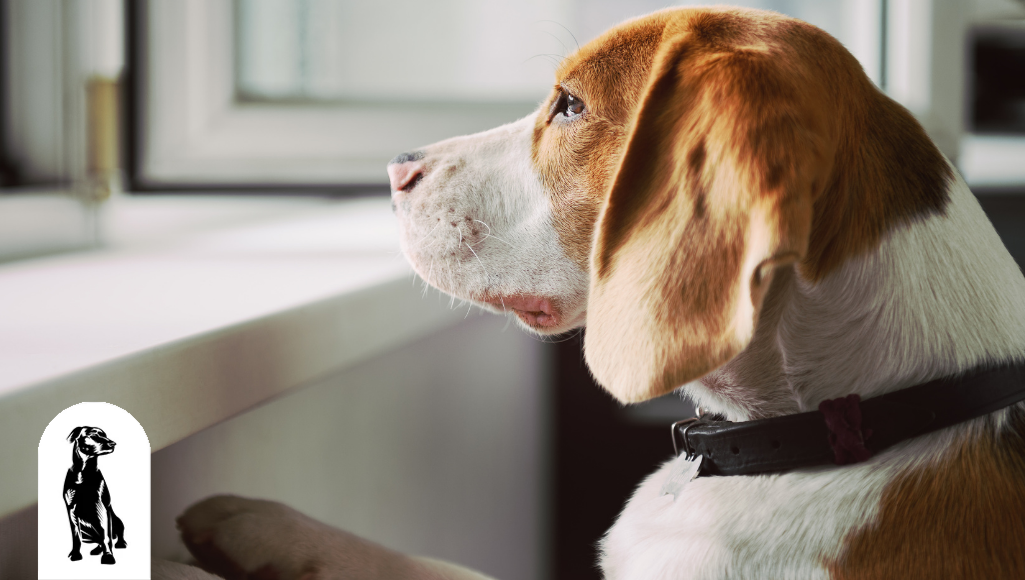
As a pet owner, it’s important to know if your dog has anxiety so you can help them cope with their stress. Communication is one of the hardest parts of having a furry companion. They can’t easily express themselves to us when they are in distress, which is why it’s vital to be familiar with their body language so you can help when something is wrong.
Fortunately, there are some tell-tale signs of anxiety in dogs and some easy ways to treat it when it comes up. Here’s everything you need to know about noticing anxiety in your furry friend.
Types of Anxiety in Dogs
Much like humans, dogs can experience different kinds of anxiety depending on the situation. The type of anxiety your dog might experience can vary from separation anxiety to illness-induced anxiety. Let’s take a look at some of the most common types.
The most common type of anxiety dogs experience is separation anxiety. Everything your dog loves is associated with you: going on walks, belly rubs, meal times, and playtime. So it makes sense that being separated from you would cause some stress. If your pup has shown an uptick in its stress levels since you returned to work in the office, that’s a good sign that you’re dealing with separation anxiety.
Another common type of anxiety dogs experience is social anxiety. This type of anxiety often makes itself manifest when your dog is introduced to new people, places, or other animals. Barking, lunging, and other signs of aggression are typical for dogs experiencing social anxiety.
Going for a ride in the car isn’t always a pleasant experience for our four-legged friends. Dogs with travel anxiety might experience motion sickness and other unpleasant side effects that make traveling uncomfortable.
A dog’s anxiety may be caused by an underlying illness, especially if the anxiety presents itself suddenly in a dog that previously showed no signs of anxiousness. Sudden and extreme behavior changes in a pup warrant a trip to the vet, who can help you determine if the anxiety is illness-induced.
Fireworks, thunder, and other loud noises are notorious for making dogs nervous. But sometimes, it crosses the line from nervousness to anxiety. Dogs that are anxious around loud noises might also struggle in large crowds and busy streets.
Sometimes it’s difficult or even impossible to determine the type of anxiety a furry friend is experiencing. It may have started as anxiety about separation or something else and then grown to be about life in general. Generalized anxiety can be difficult to pinpoint, but identifying and treating it will help improve things for you and your pup.
Signs of Dog Anxiety
Signs that a dog has anxiety might sometimes seem like something else. If your dog is frequently urinating, for example, you would probably assume that they had an extra-long drink of water. In reality, this could be a sign that they are experiencing some type of anxiety. Here’s a look at some of the most common symptoms of anxiety in dogs:
- Barking or howling when left home alone
- Hiding, running away, or cowering in a corner
- Refusing to eat
- Tucking the tail
- Avoiding eye contact
- Digging
- Pacing or panting, even when it’s not hot
- Destructive behavior
- Shivering
- Frequent urination
- Excessive licking or chewing
- Licking lips
- Excessive slobbering
- Inability to settle down
- Whining or whimpering
- Escaping the backyard
How To Help If Your Dog Has Anxiety
Treating your dog's anxiety is an important step to helping them be happier and healthier, and it will improve your life too. While there’s no one-size-fits-all approach to curing anxiety in pups, there are several steps you can try to see what works for you and your furry companion.
Separation anxiety is best treated one step at a time. Find some safe dog toys and food puzzles that will keep them occupied and start leaving them with the toys for 10 to 15-minute increments. Once your pup is comfortable with being away from you for this long, you can gradually start to extend the amount of time you are apart. Crate training can help this process too, but it’s not right in every situation. Consider whether a crate will work for you and your pup and if you think that it will, incorporate the crate training while you work through leaving your dog alone. Doggy daycare is another option for dogs who prefer more socialization.
You can treat travel anxiety similarly. Start by taking your dog for short drives and rewarding them when they remain calm in the car. Make sure they have a comfortable and safe place to be while traveling so they have a positive experience.
Other types of anxiety can be treated with behavior training. Try associating the things that cause fear and anxiety with something that your dog likes, like food rewards, playtime, and walks.
Chat With Your Vet
Sometimes, pup anxiety is too strong to treat with behavioral training. This is especially true if the dog’s anxiety has gone unchecked for an extended period. In these more extreme cases, it’s best to talk with your veterinarian about possible medical treatment. Vets may prescribe anti-anxiety medications to help keep your pup calm. These are different from sedatives that are sometimes given to help dogs with travel. Sedatives simply make the dog appear more relaxed, but they don’t treat the underlying problem. Your veterinarian will be able to help recommend a medication that is right for your dog to treat the root issue.
